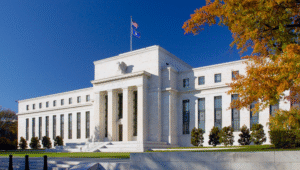$DJIA $USD $BTC
#FederalReserve #Interestrates #TrumpPolicies #Inflation #StockMarket #Tariffs #Taxes #Immigration #EconPolicy #MarketImpact #FinancialAnalysis #USDollar
The Federal Reserve is expected to make a significant move this Thursday, cutting interest rates by a quarter percentage point. This shift is highly anticipated in response to the evolving economic landscape following Donald Trump’s recent election win. Trump’s victory has sent ripples through financial markets as traders and investors brace for potential instability stemming from his proposed policies. His key campaign promises—tax cuts, immigration reform, and a more aggressive stance on tariffs—are likely to have major implications for U.S. growth projections, inflation, and the broader global economy. As a result, the Fed finds itself navigating uncharted waters, trying to balance expectations for maintaining economic stability while also dealing with potential market volatility sparked by the new administration’s unpredictable approach.
Trump’s policies on taxation and tariffs could drastically reshape the U.S. economic outlook. Specifically, lower corporate tax rates and promised infrastructure spending aim to stimulate growth, which may drive up consumer demand and inflation pressure. While this could provide a boost to employment and consumption, the inflation threat should not be ignored. A tariff-heavy trade policy might lead to higher costs for U.S. companies relying on imports and could exacerbate inflation further. The Fed, which is mandated to control inflation and ensure maximum employment, is now caught in a complex balancing act. Should inflation rise faster than expected, the central bank might have to reverse this week’s rate cut in future meetings — tightening monetary policy sooner than previously anticipated.
At this juncture, the Fed’s decision to cut rates symbolizes a pre-emptive measure to protect the U.S. economy by supporting continued lending and spending. The central bank’s independence, however, is being tested, as investors may start to question whether the cuts are part of a long-term economic strategy or merely a response to short-term political uncertainty introduced by a new administration. In the eyes of many analysts, the Fed is now more than ever trying to walk a fine line between maintaining its commitment to data-dependent decision-making and addressing the unpredictability of fiscal policy under Trump. The U.S. dollar ($USD) may experience heightened volatility in the aftermath of the rate cut, with rising uncertainty on how Trump’s policies will ultimately impact both domestic and foreign investors.
Market reaction so far has been mixed. The Dow Jones Industrial Average ($DJIA), for instance, has seen increased volatility, with stock market reactions oscillating between optimism for corporate-friendly policies and concerns over the risks of escalating trade tensions. Crypto markets, often viewed as more speculative assets, also stand to gain from any potential weakening in the U.S. dollar, with Bitcoin ($BTC) already seeing some upward momentum as investors look for alternative stores of value. All things considered, the implications of how the Fed and Trump’s administration move forward will hold significant sway not just in financial markets but in shaping the economic landscape for years to come.











Comments are closed.